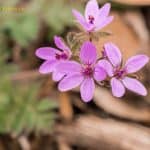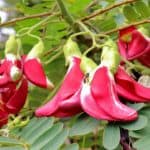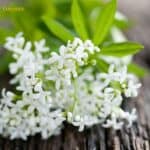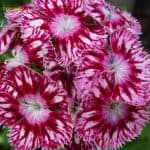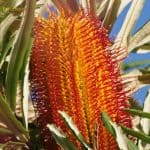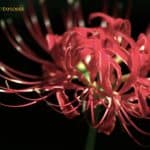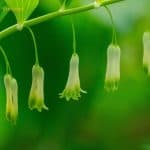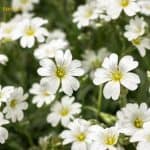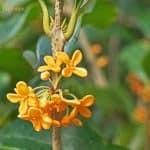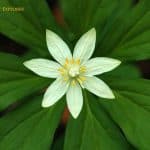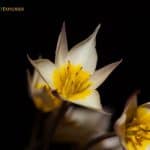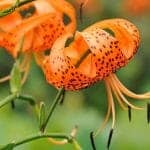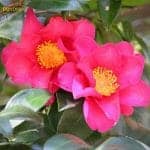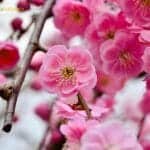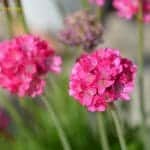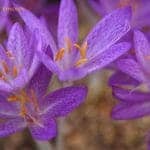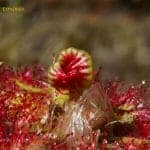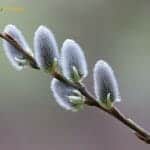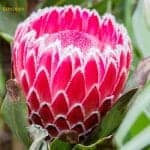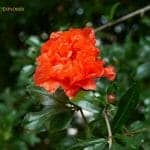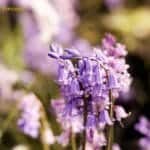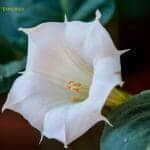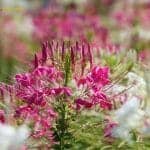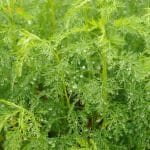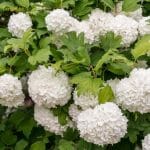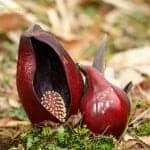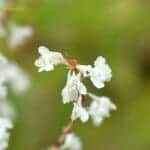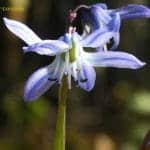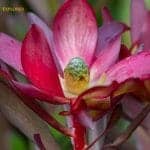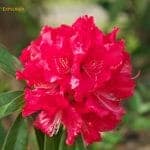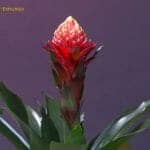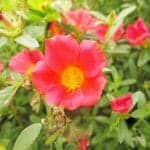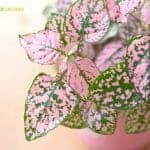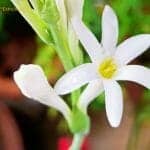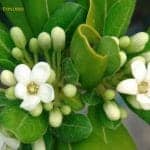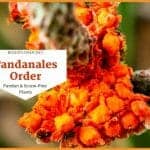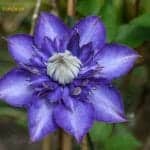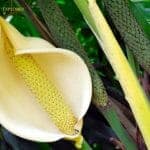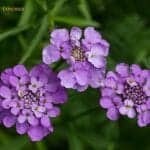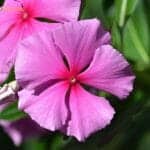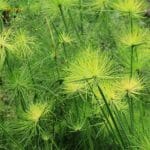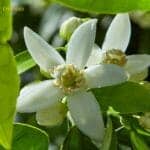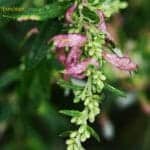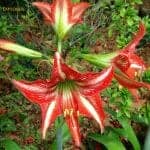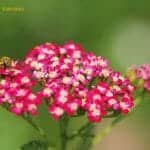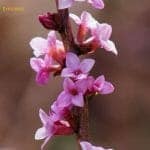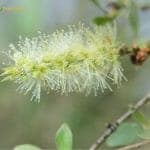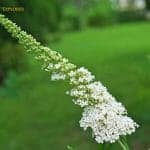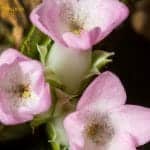the red flower - search results
If you're not happy with the results, please do another search
Filaree
Erodium cicutarium, commonly known as filaree, pinweed, common stork's-bill, redstem stork's bill, or redstem filaree, is an annual herb - or biennial in warm climates. The stems have bright pink flowers that often have dark spots on the underside.
Oahu River Hemp
Sesbania tomentosa, also known as Oahu Riverhemp, is a species of flowering plant in the Fabaceae (pea) family, native to the Hawaiian Islands and the Necker and Nihoa Islands. At least 2,000 species grow in Nihoa, while much fewer in Necker. Oahu Riverhemp is very polymorphic and has excellent variations in shape and color.
Sweet Woodruff
Sweet Woodruff (Galium odoratum) is a great statement plant in the shade garden. In spring, the plants are covered with white flowers, and the foliage gives off a sweet smell of hay. Sweet woodruff is a carpet-forming perennial most commonly cultivated as a groundcover in shady areas. There are over 600 species of flowering plants in the Galium genus.
Sweet William
Sweet William (Dianthus barbatus) is a species of flowering plant in the family Caryophyllaceae native to parts of Asia and southern Europe. The flowers come in vibrant reds, pinks, whites, and two-tone hues, often with contrasting eyes and bearded petals lined on the inside.
Strawberry Banksia
Banksia menziesii, also known as Strawberry Banksia or firewood Banksia, is a flowering plant of the genus Banksia. This Western Australia native contains over 75 species, all but one occurring naturally in Australia.
Spider Lily
Hymenocallis littoralis or spider lily is a species of the Hymenocallis genus native to the temperate coastal areas of Latin America. Hymenocallis includes over 60 species of perennial plants. The flower is closely related to the amaryllis plant and, like its relatives, has a showy flower.
Solomon’s Seal
Polygonatum biflorum, commonly known as Solomon's seal, is a classic garden shade plant that gives garden beds an architectural component thanks to its arched stems. There are around 60 species in this group of perennial grasses in the Asparagaceae (asparagus) family.
Snow in Summer
Snow-in-summer (Cerastium tomentosum) offers a solid option for adding botanical beauty to retaining wall crevices and stones in a rock garden. Additional flowering usually occurs in smaller quantities all through the summer.
Japanese Orange Osmanthus
Japanese Orange Osmanthus is an evergreen shrub or tree that produces clusters of flowers with a powerful apricot fragrance. The flowers of the Japanese Osmanthus are tiny in axillary clusters and signify truth and a noble person in Japan.
Japanese Canopy
Paris japonica is a slow-growing perennial plant native to Japan with a height of 6-12 inches. Japanese Canopy plants have white and showy flowers in a pedicel. The flowers are star-shaped with 10 tepals.
Edulis Tulip
Amana edulis (formerly Tulipa edulis) is a bulb-forming perennial with a flower that resembles a tulip. The Amana edulis plant is about 15 cm. It is native to Japan.
Tiger Lily
Tiger Lily is a perennial Japanese bulb plant that can grow 60 cm to 150 cm. in height. It is a prolific flower that gives the appearance of the tiger's skin. This is an excellent border plant. The Tiger Lily flower is associated with wealth and pride,
Sasanqua
Camellia sasanqua is a shrub that can grow to 60 cm-3.6 m. It is a beautiful Japanese plant with a pleasing fragrance. The flowers of the sasanqua are primarily single or semi-double. Therefore, their bloom is not as large as those of Camellia japonica.
Japanese Cherry Blossom
Cherry blossom (Japanese national flower) is a medium-sized tree that can grow to 15-25 feet. The spread is 4-8 meters. The tree is short-lived (15-20 years). It is native to Korea, China, and Japan. Cherry blossom signifies good luck, Love, and femininity.
Plum Blossom
Plum blossom is a deciduous, rounded tree from Japan with great ornamental value. It can grow from 4 to 10 meters in height. The ume flower in pale pink or white blossoms signifies faithfulness, purity of heart, and classiness.
Sea Thrift
Armeria maritima, the sea thrift, sea pink, or common thrift, is a plant species in the family Plumbaginaceae. The genus has more than 100 species, mainly native to the Mediterranean region. It's a popular garden flower and is sold worldwide as a cut and garden flower.
Saffron
The saffron flower is single and terminal, purple, and comprises 6 petals, 3 stamens, and a style that ends with 3 orange-red stigmas. Unlike other blossoms of the same genus, saffron blossoms do not close overnight. Saffron is a spice extracted from the flower of Crocus sativus, also known as saffron crocus.
Round-leaved Sundew
Drosera rotundifolia, common sundew or round-leaved sundew, is a carnivorous plant that grows in fens, marshes, and swamps. The flowers grow on one side of a single, thin, glabrous stem extending from the leaf rosette center.
Pussy Willow
Pussy Willow (Salix discolor) is a name for many smaller species in the Salix genus (sallows and willows) when their hairy catkins are young at the beginning of spring. Salix discolor, the American willow or glaucous willow, is one of the two species commonly known as pussy willow.
Protea
Proteas are found throughout the mountain ranges of Australia and South Africa, appearing in all their glory in various regions. Protea is a genus of plants also known as maples. Protea leaves are hard and leathery. The inflorescence of the protea flower can be described as cup-shaped, calyx-shaped, or bowl-shaped.
Pomegranate
The pomegranate (Punica granatum) is a fruity, deciduous shrub from the Lythraceae family, a subfamily of the Punicoideae. The flowers are typically bright red but can also be pink or white and are 3 cm (1.18 inches) in diameter with 4 to 5 petals.
Throatwort
Intricate and delicate, Throatwort (Trachelium caeruleum) dazzles with its thick cushions of blue-violet flowers and gives any garden or flower arrangement an elegant, lace-like charm. The flowers come in shades of white, green, pink, purple, and blue, but the flowers of the white varieties age more quickly.
Thornapple
Datura stramonium, commonly known as thornapple, Jimson weed, devil's trumpet, or devil's snare, is a flowering plant that belongs to the Solanaceae (nightshade) family. About 10 species of thorn apple are common in tropical and temperate climates around the world.
Tares
Tares (Lolium temulentum), commonly known as Darnel, cockle, Darnel ryegrass, or Poison Darnel, is an annual flowering plant of the genus Lolium Poaceae family. The flower is a large panicle. The panicles are erect and light, and when ripe, they are black.
Southernwood
Southernwood may seem like a minimal spread plant, but it has toured the world in the past few centuries. Despite its name, Southernwood is not a tree. Artemisia belongs to the family Asteraceae, which includes about 2,000 flowering plants. This plant is native to Africa and Eurasia but naturalized in scattered locations across North America.
Viburnum
The Viburnum (aka snowball) is an old-fashioned shrub known for its many beautiful clusters of white snowball-shaped flowers. You can easily accommodate your desires as 7 different viburnum shrubs are called snowball bushes including Japanese viburnum.
Snapdragon
Snapdragons (Antirrhinum majus) are an annual classic cultivated for generations. This annual excellent season's flowers go perfectly with violas and pansies. Around 20 species in the genus are native to the Mediterranean, from Morocco and Portugal to southern France, Syria, and Turkey.
Skunk Cabbage
Skunk cabbage flower is not a real cabbage but rather belongs to a primarily tropical family of plants in the Araceae (Arum) family. There are 3 species of perennial plants in the Symplocarpus genus. This flowering plant is a low-growing plant that grows in moist hill slopes and humid areas of eastern North America.
Silver Lace Vine
Silver Lace Vine (Polygonum aubertii) is a popular but controversial climbing plant because of its vigorous growth habit. This drought-tolerant vine wraps around porch pillars, fences, or pergolas. Polygonum is a genus of around 130 species of flowering plants in the Polygonaceae (knotweed and buckwheat) family
Scille
The Scilla genus includes around 80 species of bulbous herbaceous perennial plants in the Asparagaceae family, a subfamily of the Scilloideae. Most flowers bloom in early spring, but some bloom in fall. Several species of Scilla are popular as ornamental garden plants. Each flower has 6 petal-like tepals, and each tepal has a distinctive dark blue midrib (median stripe).
Safari Sunset
The Leucadendron 'Safari Sunset' is a favorite of gardeners and florists is an evergreen multi-stemmed shrub with vivid, deep red bracts forming exceptionally long stalks (over 1m or 3 feet) at the tips. Perfect for use in easy-care gardens and aquifers, this tall, vigorous Leucadendron is an excellent choice for hedges, screens, or as an exhibition plant.
Rock Soapwort
Saponaria ocymoides, commonly referred to as rock soapwort, is a semi-perennial herbaceous perennial plant native to the rocky slopes of the mountains of south-central and southwest Europe.
Rhododendron
Rhododendron is the genus and common name for a diverse and large group of small trees and woody shrubs in the flowering Ericaceae family. There are over 1000 rhododendrons native to Australia, North America, Asia, and Europe. The trees can be evergreen or deciduous
Quesnelia
Quesnelia is a genus of flowering plants in the Bromeliaceae family, a subfamily of the Bromelioideae. The genus consists of about 20 species of plants that are native to southeastern and eastern Brazil. Quesnelia is a perfect landscaping bromeliad with its vibrant flower in various colors.
Prickly pear
The prickly pear, Opuntia ficus-indica, has established itself in different parts of the world where it is not native. In fact, it is so widespread that its original native habitat is unknown, although it is likely native to Mexico. Prickly pears can reach a height of 1.5 meters (5 feet) and can grow to a diameter of 4.5 meters (15 feet).
Purslane
Purslane (Portulaca grandiflora) is a heat and drought tolerant annual plant native to the hot, arid plains of Uruguay, Argentina, and southern Brazil. Purslane is among the 3 most important species of portulaca. It has several common names, including rock rose, the sun rose, Mexican rose, eleven o'clock, and rose moss.
Pompom Chrysanthemum
Pompom blooms are annual flowering plants better known as chrysanthemums. The flowers are known as pompoms because their fullness makes them look like the pompoms used by cheerleaders. Pompom flowers are native to China. Flowers are sometimes seen in ancient Chinese art.
Polka Dot Plant
Polka Dot Plants (Hypoestes phyllostachya) are common houseplants with brightly colored leaves. Also known as the freckle face plant, the Polka dot plant is an evergreen shrub native to East Asia, South Africa, and Madagascar.
Polianthes tuberosa
Polianthes tuberosa, commonly known as tuberose, is possibly native to Mexico. It's considered iconic and has a long cultural history dating back to pre-Columbian times. The Agave genus (Agavaceae) includes about 200 species.
Pittosporum
Pittosporum is one of many evergreen trees or shrubs primarily native to New Zealand and Australia, making up the Pittosporaceae family's Pittosporum genus. Also known as Australian laurel, Pittosporum is mainly planted as ornamental plants in temperate regions
Order Poales / Grass, Bamboo and Pineapple
Poales species are monocots with two-ranked leaves, much reduced flowers, dry and small stigma, and well-developed style. The Poales flowers are unisexual, bisexual, or sterile and pollination of the members is via anemophily or entomophily. The famous bamboo, pineapple, Yellow-eyed grass, Stream Bogmoss, and Palmiet are found under Poales order.
Order Pandanales / Pandan & Screw-Pine Plants
Panama hat palm or screw-pines order of flowers is called Pandanales, which range from arborescent plants of tropical coastal areas and rainforests to the forest floor’s twining herbs, lianas, and saprophytic herbs. Hala tree, Rainforest Screw Pine, Paca, Purple Vellozia, Creeping vellozia, and Wild Asparagus are examples of Pandanales order flowers.
Clematis
Clematis is an easy-care perennial covered in large, vigorous flowers in spring and summer (there are also some autumn blooms). These beautiful flowers are available in various colors, including red, white, pink, blue, purple, and bi-color.
Phlox
As the mainstay of the cottage garden, Phlox owes its continued popularity to its puffy flower clouds and simple nature. Phlox is a genus of about 67 species of annual and perennial plants in the Polemoniaceae family. The lightly scented flowers can be white, bright red, light blue, pink, or purple.
Philodendron
The philodendron isn't a plant per se, as widely believed, but a plant genus botanically known as Araceae. Its great popularity is due to its simplicity. The foliage of the philodendron is usually green, but it can be coppery, purple, or red. The long, white part of the blossom is known as the spadix.
Persian Candytuft
Commonly known as Persian candytuft or Persian watercress, Aethionema is a genus of around 60 Brassicaceae (mustard) family species. Persian candytuft is magnificent Old-World watercress cultivated for its fragrant pink flowers.
Periwinkle
Vinca minor, commonly called periwinkle or Vinca, is among the most popular and primarily used groundcovers. Periwinkle is a species of the Apocynaceae (oleander) family native to Southern and Central Europe. Phlox-like, tubular, red-violet, pink, or lavender-blue flowers (up to 1 inch wide) appear in spring in the leaf axils and bloom intermittently from summer through fall.
Paper Reed
Cyperus papyrus, also called paper reed or Egyptian reed, is an African tufted species native to the southern Mediterranean, the wettest parts of Africa, and Madagascar. It is a dense collection of many bright green thread-like rays. Tiny secondary umbels are formed with 3 to 5 rays and elongated, narrow bracts at the tips of the rays.
Osteospermum
Osteospermum is a relatively new addition to the world of gardening as it became only available in the early 1990s. With its daisy-like flowers in a wide variety of colors, the osteospermum is a favorite among florists and gardeners. Each flower features a central disk of tiny tubular flowers surrounded by fertile ray blooms that resemble petals in a wide range of colors, including yellow, pink, and white.
Orange Blossom
When we think of oranges, we often think of their refreshing citrus flavor, vitamin C, and juice. However, we seldom think of them coming from trees that produce orange blossoms with an equally attractive fragrance. The flowers are star-shaped, white, and of course, have a strong scent of citrus notes and sweet, sweet, soapy undertones.
Myrsine
Myrsine is a genus of plants in the Primulaceae family. It was previously placed in the Myrsinaceae family before merging with the Primulaceae. Myrsine africana has small white to pink flowers in spring followed by purple/bright red berries.
Mulberry
Mulberry is the name given to various types of deciduous trees or shrubs of the Morus genus in the Moraceae family cultivated for their palatable fruits. The trees produce small greenish-yellow flowers in dense clusters and an oval cluster fruit made from individual stone fruits.
Mugwort
Common mugwort, Artemisia vulgaris, is a species in the Asteraceae (sunflower) family. It is one of many species (2-400) in the Artemisia genus, commonly referred to as mugwort. The relatively small florets (5 mm long) are radially symmetrical with numerous dark red or yellow petals.
Montbretia
Extremely attractive and exotic in appearance, Montbretia produces decorative clusters of upright, sword-shaped leaves and glowing sticks of yellow, orange, red, and scarlet tubular flowers that bloom for 5 to 8 weeks from mid-summer to mid-fall. Most Montbretia flowers are arranged in an intricate panicle.
Milfoil
The watermilfoil is an aquatic plant native to North Africa, Asia, and Europe. Watermilfoil is a genus of approximately 69 species of aquatic plants. The water milfoil produces small, four-petalled, reddish blooms on a spike that protrudes 2 to 4 inches from the water.
Mezereon
Mezereon (Daphne mezereum), commonly known as the February Daphne for its late winter flowering, is a small, semi-evergreen, deciduous shrub with an upright, bushy growth habit that usually grows 3 to 5 feet tall and wide. The fragrant pink to reddish-purple flowers (up to 1/2" wide each) bloom in stemless clusters (2 to 4 flowers per cluster).
Melaleuca
Melaleuca is a genus of almost 300 plant species in the myrtle (Myrtaceae) family, commonly known as tea tree, honey myrtle, or paper bark. These common names refer to many species' scaly bark and the nectar produced in their flowers. The flower color varies from pink to white, red, green, or pale yellow.
Buddleia
Commonly referred to as a butterfly bush, Buddleia davidii is a deciduous shrub native to forest clearings, limestone outcrops, mountain slopes, and Rocky River banks in America, Africa, and Asia. Buddleia (orth. Var. Buddleja) is a genus with over 140 flowering plant species in the Scrophulariaceae (figwort) family. Many named varieties have been introduced over the years, expanding the flower range colors to include pink, yellow, white, and red.
Godetia
As soon as the temperatures rise again in early summer, the flowers of Godetia grandiflora peak. Also known as the satin flower, the godetias consist of up to 25 species of flowering plants. These come in many bright shapes and shades, from delicate pastels and sheer satin white to eye-catching two- and three-tone combinations of sparkling apricot, mauve, lavender, carmine, red, purple, pink, orange petalled blooms.
Arbutus
Arbutus is a genus of 12 species of recognized flowering plants in the Ericaceae family, native to the temperate regions of North America, Western Europe, the Mediterranean, and the Canary Islands. Arbutus species are typically characterized by bell-shaped pink or white blooms in loose terminal racemes and by fleshy orange or red berries with a remarkably irregular surface.


